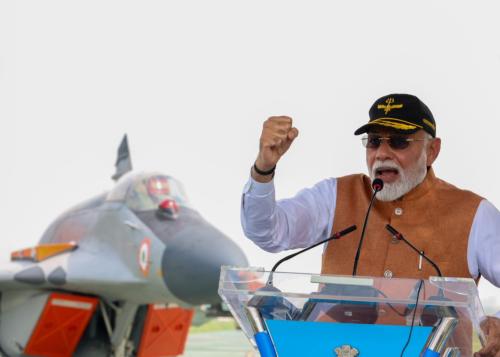One of the original sins of humanity has been its inability to live at peace. From the very beginning of history, conflicts over food, territory, riches, power, and prestige have been an almost constant recurrence. Indeed, much of what is written in human history is simply a history of warfare. The world that we know today, from the states that we live in to the technology that we use daily, has been greatly shaped by violent struggle.2
Yet even in this most terrible realm of societal violence, rules of behavior developed. Among the very first was the differentiation between warriors and civilians. In even the most primitive societies, a distinction was made between those who chose to bear the risks involved in the profession of fighting and those who lay outside the field of battle. In a sense, a bargain was struck. Honor and power were accorded to the warriors. In exchange, civilians were granted a sort of guarantee of protection from their depredations. While it applied to all those who were unarmed, special immunity was usually given to certain groups: the old, the infirm, women, and, most particularly, children.3
While certainly not always complied with, this “law of the innocents” had been one of the most enduring rules of war, arguably the most important of what legal theorists term jus in bello (laws in war). The deliberate targeting of civilians, in particular children, has been the single greatest taboo of all, extending from ancient Chinese philosophy and traditional African tribal societies to the state signatories of the modern-day Geneva Conventions.
Unfortunately, in the chaos and callousness of modern-day warfare, this law has seemingly broken down. Civilians have always suffered in war, but the difference today is that in many present-day conflicts they are the primary target. Tactics of ethnic cleansing and genocide have replaced the strict codes of conduct and chivalry that guided such military social orders as medieval European feudalism and ancient Japanese Bushido. Whereas wars were once fought almost exclusively between soldiers, in recent decades, the worldwide percentage of victims from wars has become predominantly civilian. In World War I, civilian casualties were under 10 percent of the total; in World War II, they had risen to nearly 50 percent. The evolution continued through the next 50 years, to the point that now the overwhelming majority of those killed in conflicts are civilians, not soldiers. For example, of all the persons killed in African conflicts in the late 20th century, 92 percent were civilians. Similar figures hold true for the wars in the Balkans.4 Civilians once had no place on the battlefield; now the battlefield is almost incomplete without them.
In particular, the once unimaginable targeting of children has become a widespread tactic of war. Examples run from the Serb snipers during the Sarajevo siege who deliberately shot at children walking between their parents, to Rwandan radio broadcasts before the 1994 genocide that reminded genocidal Hutu killers to be sure not to forget “the little ones.” The resulting tolls from this shift in attitudes are staggering. In the last decade of warfare, more than two million children have been killed, a rate of more than 500 a day, or one every three minutes, for a full 10 years. As you read this article, these numbers are growing only larger.
The Brookings Institution is committed to quality, independence, and impact.
We are supported by a diverse array of funders. In line with our values and policies, each Brookings publication represents the sole views of its author(s).



Commentary
The New Faces of War
January 1, 2005